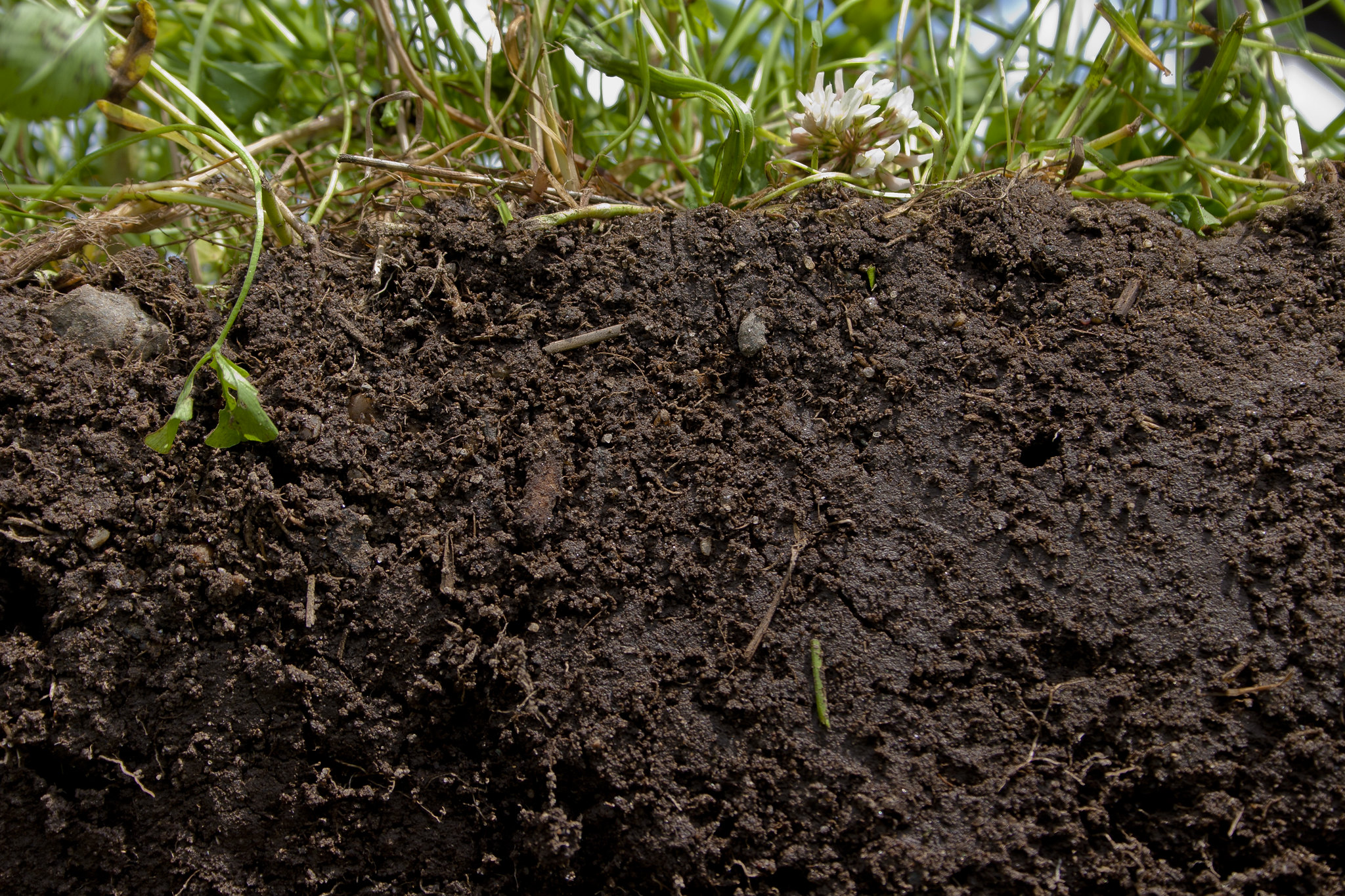Soils are actually pretty complex. According to Brady and Weil, in their fine volume The Nature and Properties of Soils:
What does that mean exactly? Let's break it down.The four major components of soil are air, water, mineral matter, and organic matter.
Air in soil is contained in pore spaces. Different soils have varying amounts of pore space. A well-aerated soil is more likely to grow crops, since it is easier for plants to stretch out their roots. If a soil is highly compacted, nothing is going to grow there. Think of tight packed clay, for example.
Water in soil is pretty easy to visualize. A sandy desert soil, for example, might retain very little water, even after a rain. But a soil higher in organic content, like a loam, will hold more water.
Mineral matter simply refers to the type of bedrock from which the soil was derived. Bedrock is sometimes referred to as a soil's "parent material." A soil that came from granite will have different properties than a soil derived from limestone. (According to this article in Soil Science and Plant Nutrition, red limestone-based soils have higher levels of trace elements than soils derived from other types of bedrock.)
Organic matter in soil consists of plant or animal residues along with soil-dwelling critters like earthworms. This is probably the biggest difference between dirt and soil, and is the origin of the comment above from my professor: soils are living ecosystems.
Soils are probably the most underrated of all ecological resources. If you think about it, everything we do depends upon the soil. We rely upon soils to filter the water we drink. We need soils to grow crops for food, lumber for housing, cotton and hemp for clothing. How well a soil compacts - or doesn't - affects our ability to build homes and businesses. In short, we shouldn't treat soil like dirt!

This soil from Illinois is high in organic matter. Photo credit: Natural Resources Conservation Service Soil Health Campaign, via Flickr
2 comments:
Post a Comment